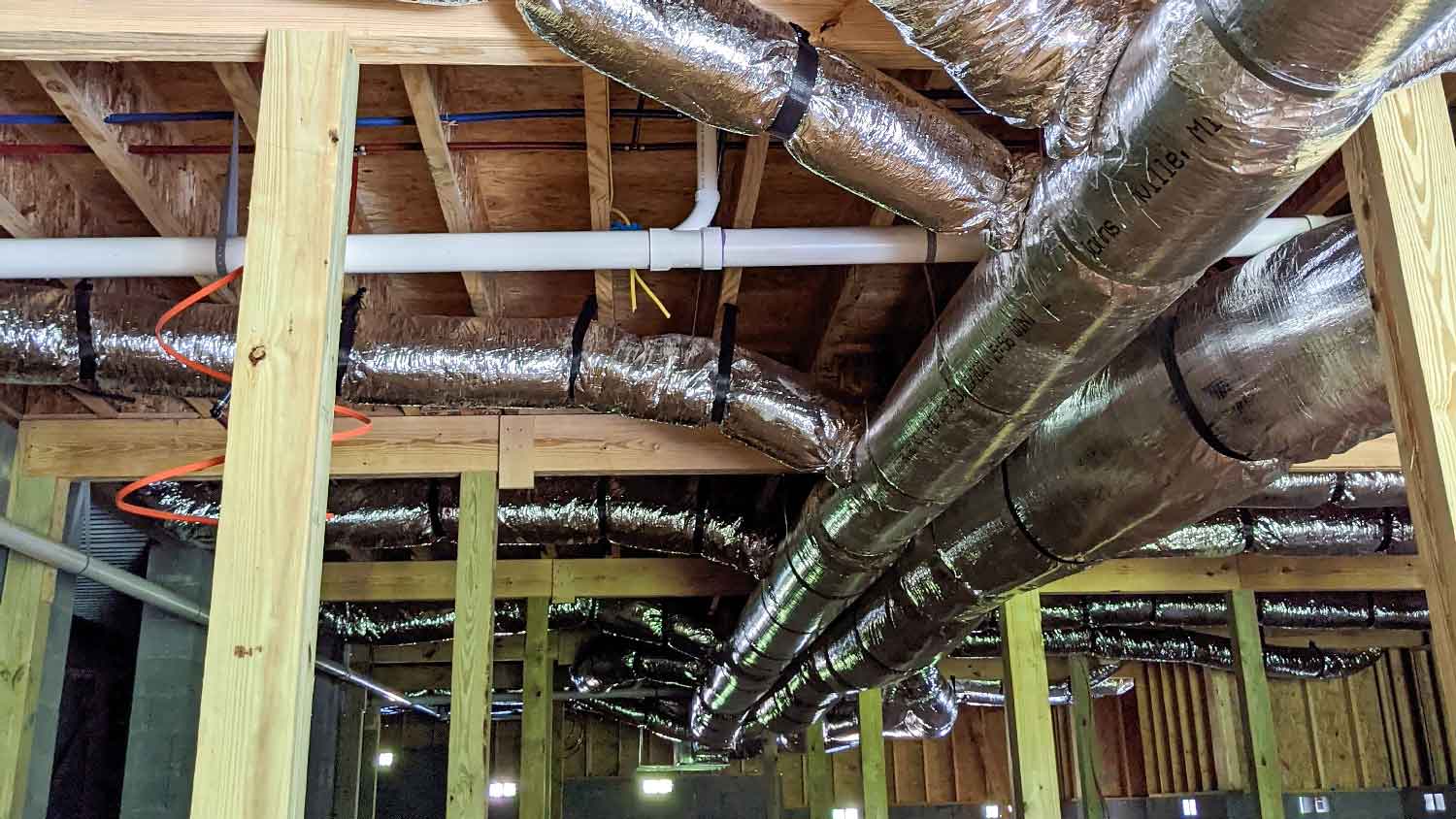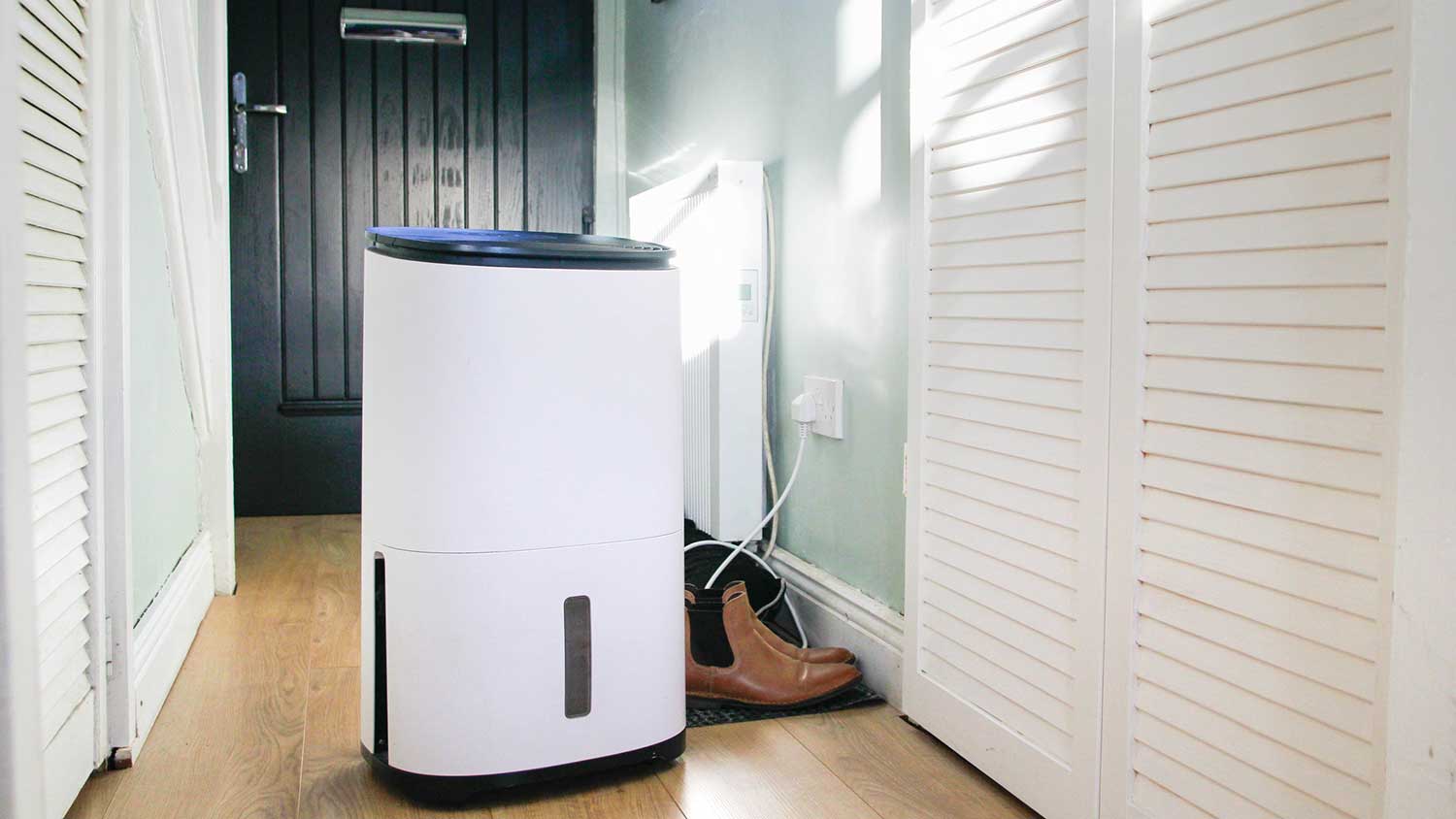Ductwork Calculator: Duct Sizing Chart
Let this ductwork sizing chart work for you


Pros calculate duct sizes based on flow rate and friction loss.
You’ll use round, flexible ducts or inflexible rectangular ducts for projects.
It’s better to oversize than undersize ductwork.
Calculating the duct sizes you need for your project isn’t simple and should be left to the pros. However, you can still use this duct sizing chart to break down how a professional would determine the required duct size and to know how you can calculate the volume of your ductwork.
What Duct Size Is Needed for Various Projects?
Planning ventilation systems requires precise knowledge of flow rates and duct sizing to accommodate them. Each room or appliance has a specific cubic feet per minute (CFM) requirement that ensures proper air circulation. The table below shows common duct sizes and CFM rates and is a good reference for projects and spaces:
| Project | Duct Size Requirements | Cubic Feet per Minute Airflow (CFM) |
|---|---|---|
| Bathroom exhaust | 4-in. diameter round | 90 |
| Small bedroom duct system | 6-in. rectangular | 115 |
| Large living room duct system | 10-in. to 12-in. rectangular | 290 |
| Dryer vent | 4-in. to 5-in. diameter round | 105 |
| Commercial office space | 12-in. to 16-in. rectangular | 1.5 CFM per square foot |
How to Measure Ducts and Calculate Duct Size Volume
There are two steps you need to follow to find the correct duct size for your project. The first is finding the volume of the ducts you may be installing. The second is a much more involved calculation and is designed to determine the duct size based on flow rate and velocity.
To find the volume of rectangular ducts, use the following formula:
Duct Size = Length (in feet) x Width (in feet) x Height (in feet)
To find the volume of cylindrical (circular) ducts, use the following formula:
Duct Size = Length (in feet) x π x Radius²
To find the radius, use half of the diameter. If that’s difficult to measure, find the distance around the cylinder (called the circumference), then use:
Radius = Circumference / (2 x π)
How to Calculate Duct Sizes by Flow Rate
Homeowners shouldn’t be calculating duct sizes on their own. The reason is that pros use mathematical formulas based on a number of factors that aren’t easy to determine as a DIYer.
For example, you’d need to know the air velocity in feet per minute (fpm) of your HVAC system, the number of bends in your ductwork, and the total length of your proposed ductwork system.
A good way to understand your systems is by becoming familiar with the types of ducts used in heating and cooling. However, we recommend flow rate and friction loss calculations be left to a pro, which is why we didn’t include complex formulas in this article.
Who to Hire to Measure and Install Ducts
If you want to measure your ducts or get an accurate quote for a project, talk to a duct installation pro near you. While you can hire a general HVAC technician for the work, a dedicated duct pro is often the better choice due to familiarity with materials and installation requirements specific to ductwork. HVAC pros are excellent, but a ductwork pro is the best option for these projects.
While handy homeowners can replace ducts themselves, we don’t recommend installation as a DIY project. The reason is that improper installation can lead to damage to your home. Some symptoms of improper installation or faulty ductwork are recurrent mold issues, poor heating and cooling, high energy bills, and loud noises through your ductwork.
The most common duct sizes used in residential homes are round ducts 6 to 12 inches in diameter. This size is small enough to be easily installed into walls and ceilings, yet is wide enough to allow for adequate airflow through the home. Improper duct sizing can cause HVAC issues, increased energy bills, and a drop in HVAC efficiency, which translates into a less comfortable home.





- Furnace Repair
- Air Conditioning Repair
- HVAC Repairs
- Furnace Installation
- Wood & Pellet Stove Repair
- Dehumidifier & Humidifier Repair
- Heat Pump Companies
- Swamp Cooler Repair
- Wood Stove Services
- HVAC Companies
- Commercial A/C Repair
- Geothermal Installation
- Air Conditioning Installation
- Boiler Repair
- 24 Hour Furnace Repair
- Geothermal Repair
- Heat Pump Repair
- Humidifier Installation
- Thermostat Repair
- Thermostat Installation
- Nest Installation
- Heating & Cooling
- Heating Repair
- Furnace Cleaning
- Furnace Tune-Up
- HVAC Technicians
- Subcontractors
- Furnace Maintenance
- Plumbing & Heating Companies
- Wood Stove Inspection
- Mini Split Installation
- Wall Heater Repair
- Duct Installers


